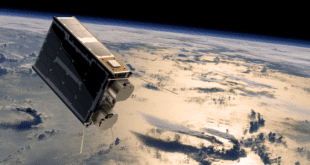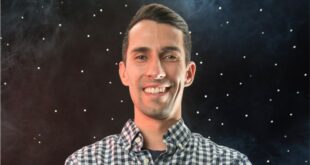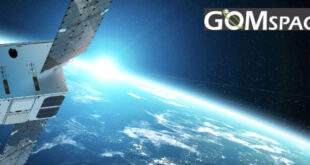
The North American subsidiary of GomSpace Group AB signed a contract on 7 February 2020 valued at 4.5 MSEK (approximately US$465,000) with the University of Arizona to deliver satellite elements and related services to support their CatSat high-gain antenna mission.
CatSat aims to demonstrate a game-changing ultra-lightweight, high-gain antenna developed by FreeFall Aerospace based on technology invented at and licensed from the University of Arizona (UA). Under the leadership of Dr. Christopher Walker, Professor of Astronomy, UA students and staff will provide a camera system and radio propagation experiment, integrate the science and communications payloads, deliver the flight system for launch, and lead mission operations. The mission, named for the University of Arizona Wildcats, was selected by the NASA Cubesat Launch Initiative for launch in early 2021.
The FreeFall Aerospace inflatable antenna system packages into less than 1.5U of the total 6U Cubesat volume and deploys in orbit to provide a lightweight one meter or larger aperture that can increase total data return by 10-100 times that of conventional technology, with less mass and power. “This is an exciting step forward for FreeFall and the entire small spacecraft industry,” said Doug Stetson, CEO of FreeFall Aerospace. “Working with UA and GomSpace we’ll be able to help realize the full potential of small low-cost spacecraft by dramatically increasing their data return capability.”
The satellite will be a 6U platform provided by GomSpace and delivered to the University of Arizona. “The mission will utilize GomSpace’s space-proven 6U platform which provides the reliable foundation for many exciting in-orbit demonstrations proving the technology for tomorrow’s new applications”, said Niels Buus, CEO of GomSpace.
Rincon Research will provide and program their advanced, compact, flight-qualified Software Defined Radio (AstroSDR) to complete the payload package. The AstroSDR will perform high-rate signal and image processing to support mission experiments and establish a high-bandwidth telecom link between the spacecraft and Earth.





